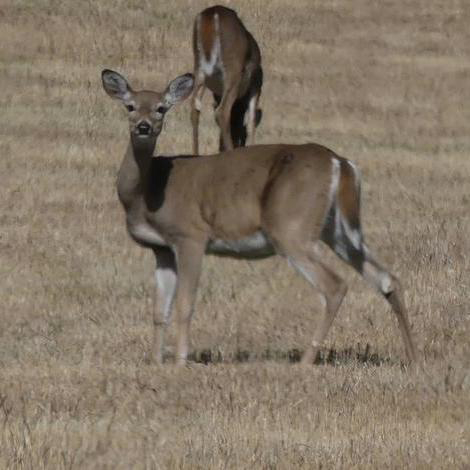
|
Outside of mandatory testing units, F&G will take voluntary samples for free CWD testing
Hunters in 2025 will have mandatory testing for chronic wasting disease for deer in seven hunting units, including the addition of Unit 63A north of Idaho Falls, which was added after a domestic elk tested positive on a private game operation.
Fish and Game’s management of CWD requires wildlife managers and hunters to adapt to changing conditions as information arises about where the disease is found - and not found - based on testing. Hunters play a critical role in CWD testing because there is no live test for the disease, and getting accurate and current information requires annual testing statewide.
Deer are more susceptible to CWD than elk or moose, so they are the only animal required for testing in units where CWD testing is mandatory. But Fish and Game will test any deer, or elk for hunters regardless of where it was harvested in the state. CWD testing is free and hunters can see the results online.
Fish and Game currently manages CWD through three main methods:
Currently, Units 14, 18 and a portion of Unit 1 comprise the CWD Management Zone for 2025. CWD testing is mandatory for all harvested deer in those units, and the following rules also apply:
Mandatory testing in Units 23, 24, 32A and 63A, but no carcass transport restrictions
CWD testing is mandatory in Units 23, 24, 32A and 63A for all deer, but it does not apply to elk and moose taken in those units. Because these units are not within the CWD Management Zone, carcass transportation restrictions do not apply. Fish and Game also welcomes any voluntary testing of elk and moose.
Why is CWD management important for hunters
Fish and Game’s CWD management priority is keeping the percentage of animals infected – or prevalence – low in deer herds. CWD can’t be eradicated because it remains in the environment for decades. Keeping the prevalence low will help maintain healthy big game populations.
“The ultimate goal is to slow, or prevent, the spread of CWD because it will negatively affect the deer populations and hunting opportunities,” Fish and Game’s State Wildlife Manager Rick Ward said. “We want to keep CWD out of units where it’s not present, but we can’t do that if we don’t know exactly where the disease is located.”
Active and adaptive CWD management that keeps the number of infected animals low typically reduces the spread and means fewer sick animals and more healthy deer available for hunters.